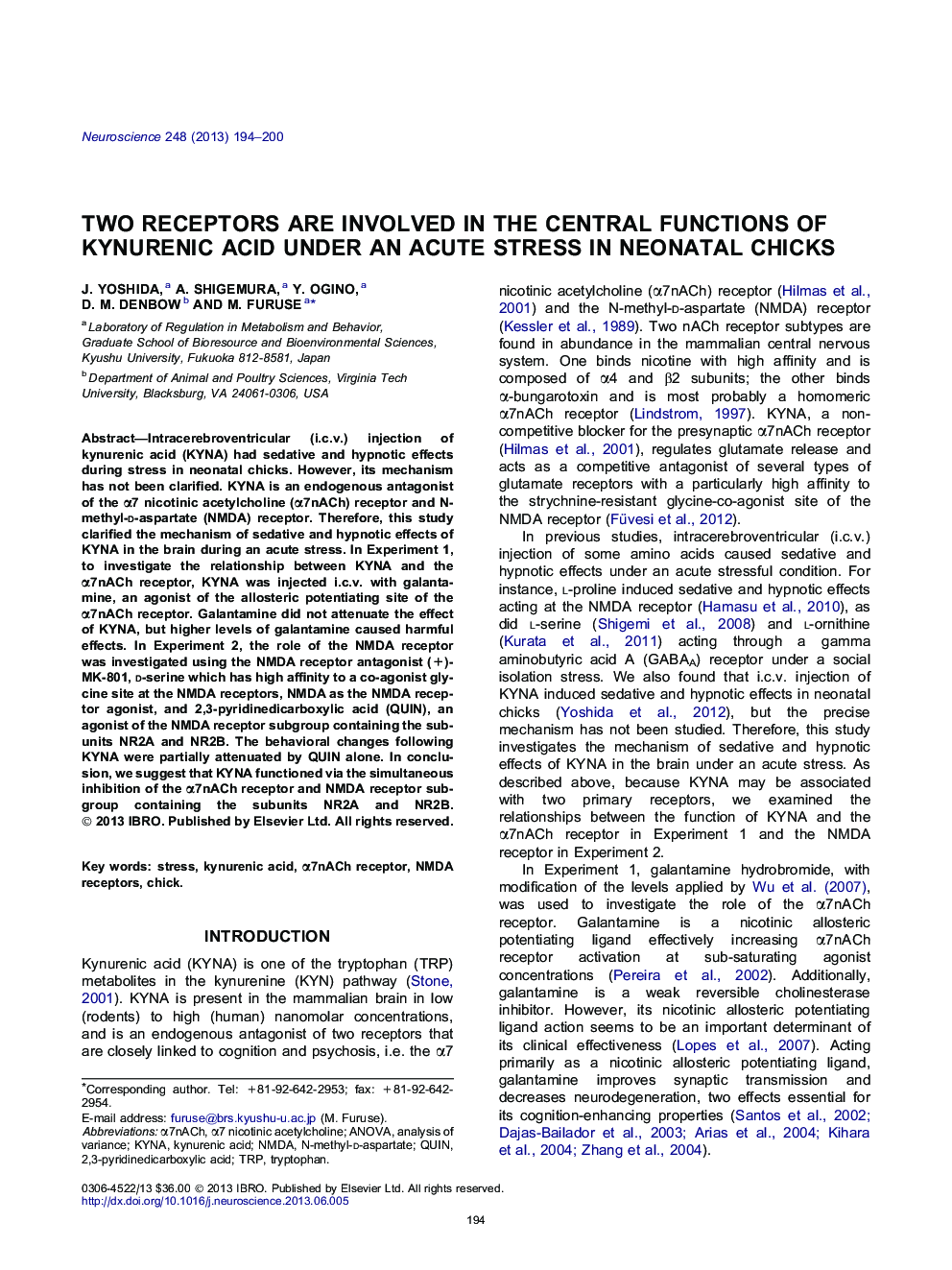| کد مقاله | کد نشریه | سال انتشار | مقاله انگلیسی | نسخه تمام متن |
|---|---|---|---|---|
| 6274691 | 1614828 | 2013 | 7 صفحه PDF | دانلود رایگان |
- Kynurenic acid (KYNA) had sedative and hypnotic effects during stress in chicks.
- KYNA is an endogenous antagonist of both the α7nACh and NMDA receptors.
- KYNA inhibited NMDA receptor subgroup containing the NR2A and NR2B subunits.
Intracerebroventricular (i.c.v.) injection of kynurenic acid (KYNA) had sedative and hypnotic effects during stress in neonatal chicks. However, its mechanism has not been clarified. KYNA is an endogenous antagonist of the α7 nicotinic acetylcholine (α7nACh) receptor and N-methyl-d-aspartate (NMDA) receptor. Therefore, this study clarified the mechanism of sedative and hypnotic effects of KYNA in the brain during an acute stress. In Experiment 1, to investigate the relationship between KYNA and the α7nACh receptor, KYNA was injected i.c.v. with galantamine, an agonist of the allosteric potentiating site of the α7nACh receptor. Galantamine did not attenuate the effect of KYNA, but higher levels of galantamine caused harmful effects. In Experiment 2, the role of the NMDA receptor was investigated using the NMDA receptor antagonist (+)-MK-801, d-serine which has high affinity to a co-agonist glycine site at the NMDA receptors, NMDA as the NMDA receptor agonist, and 2,3-pyridinedicarboxylic acid (QUIN), an agonist of the NMDA receptor subgroup containing the subunits NR2A and NR2B. The behavioral changes following KYNA were partially attenuated by QUIN alone. In conclusion, we suggest that KYNA functioned via the simultaneous inhibition of the α7nACh receptor and NMDA receptor subgroup containing the subunits NR2A and NR2B.
86
Journal: Neuroscience - Volume 248, 17 September 2013, Pages 194-200
